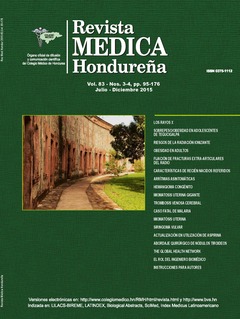Alterations of variability of cardiac frequency and asympomatic arrhythmias in obese patients
Keywords:
Obesity, Heart rate variability, Ventricular arrhythmiasAbstract
Introduction: Obesity is frequently associated with potentially serious cardiovascular disorders. The important metabolic alterations produce dysautonomic precocious changes not always early detected in the clinic. Objetive: To study the possible association between ventricular arrhythmias and alterations of the heart rate variability in obese patients. Material and methods: 172 subjects, 87 obese patients (41 women), 25 to 60 years old, 85 healthy volunteers (39 women), 35 to 60 years old, were incorporated. Mean age was 47.5 ± 10.5 years old among obese patients and 40. ± 10.7 among no obese patients (p<0.05). Clinical record, routine analysis, body mass index (BMI), measurement, heart rate variability (HRV) and presence of ventricular arrhythmias were determined with 24 hs Holter. Statistics methods: Chi2, Student-t test (independent samples), Spearmen correlation, Multiple Logistic Regression (Maximum likelihood, “quasi-Newton”). Logistic model to the analysis of ventricular arrhythmias association and other covariates. Each p-value <0.05 (two- tailed) was assessed significant. Outcomes: In 57% of the obese patients, it was detected heart rate variability disorders and 33% showed ventricular arrhythmias. A significant difference was registered between controls and obese patients, especially in SDNN. The presence of ventricular arrhythmias was more often in obese patients (33% vs 2%) the difference reach statistic signification (p=0.09). In the logistic regression, SDNN were associated with obesity even aged-adjusted. Conclusions: The prognostic value of these findings should be studied in prospective studies, because they may contribute to the early diagnostic of autonomic disorders in obese patients.
Downloads
168




